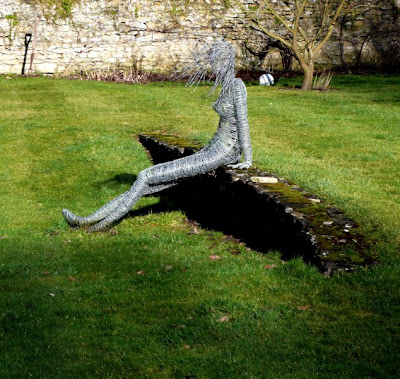It can be a difficult call. When is figurative sculpture in a garden setting good, and when is it just wrong? Sometimes it is easy - if the setting is grand and the sculpture of the highest quality, preferably antique, located in a grove of established trees, as above, then the whole thing feels right. The gardens of ancient Rome, the huge vistas of the English Landscape tradition and the magnificently ordered spaces of Renaissance Italy all set the precedent for great sculpture, often derived from Greek originals. The forms of an idealised humanity are pressed into service drawing the eye, sending a message, populating the scene. We are in our own Arcadia.
With modern sculpture things get a bit more problematic - for me at least. The huge number of poor quality reproductions in cast stone from the middle of the eighteenth century onwards started the trend for garden statuary in gardens of all sizes, and the habit continues today. Shepherdesses dressed up like Marie-Antoinette and coy children feeding Disneyesque birds from their hands can still be bought from the average garden centre. I'm struggling to imagine the setting that would benefit from these all-too-literal presences.
There is plenty of good figurative modern sculpture, however, that suits modern garden styles well - unheroic, relaxed, in a variety of materials that separate them from the traditions of Parian ware and cast concrete. This trend towards figures engaged in the simple activites we ourselves enjoy in a garden - perched on benches, lying supine reading a book - makes them clearly distinct from the gods and titans of Classical sculpture, and equally far from the later tradition of boys holding birdbaths.
At the extreme of this spectrum are figures such as the above - created from biodegradable materials, assembled on site and with a short life, temporary presences inhabiting the garden, Green men.
Paul Ridley Design




No comments:
Post a Comment